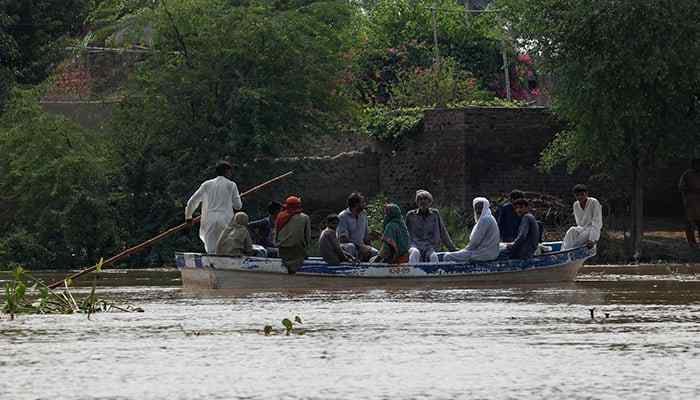Pakistan’s National Disaster Management Authority (NDMA) has issued a fresh flood warning after India began releasing additional water into the Ravi River from the Madhopur Headworks, raising fears of severe flooding in Punjab. The warning comes just a day after New Delhi alerted Islamabad about planned water discharges into the Sutlej and Chenab rivers, which have already inundated several areas.
Rising Tensions Over Flood Threats
Diplomatic sources confirmed that India has contacted Pakistan twice in as many days, warning of escalating flood risks. The latest communication follows earlier alerts over the Tawi River, which flows from Indian-administered Jammu and Kashmir into Pakistan’s Sialkot district and eventually joins the Chenab.
These exchanges mark a rare instance of direct communication between the two nuclear-armed neighbors since May, when a deadly militant attack in Pahalgam triggered the most intense cross-border military confrontation in decades. India blamed Islamabad for the assault, a charge Pakistan denies. The fallout saw New Delhi suspend the Indus Waters Treaty (IWT), a decades-old agreement that has governed water sharing between the rivals since 1960.
Forecasts Show Critical Water Levels in Major Rivers
The NDMA advisory warns of worsening conditions across key river systems:
- Ravi River: Floodwaters at Jassar could surge to 125,000 cusecs within 48 hours, officials say.
- Sutlej River: Already in “very high flood” at Ganda Singh Wala, where flows hit nearly 189,000 cusecs on Monday. Levels could climb to 220,000 cusecs.
- Chenab River: Water discharge at Marala may rise to between 150,000 and 200,000 cusecs, with streams like Jammu Tawi and Munawar Tawi also swelling.
- Indus Basin: Medium to low flooding is being reported at major barrages including Kotri, Sukkur, Tarbela, Kalabagh, Chashma, and Guddu.
The Thein (Ranjit Sagar) Dam in India is reportedly nearing its storage limit, increasing the likelihood of additional releases. Smaller tributaries, such as Aik, Deg, Bein, Basantar, and Palkhu, are also running high.
Pakistan’s Emergency Measures
Prime Minister Shehbaz Sharif has ordered the NDMA to hold daily briefings during the monsoon season, while relief teams work with provincial authorities to reinforce embankments and prepare evacuation plans.
Pakistan’s Foreign Office has condemned India’s decision to suspend the IWT, calling it a “serious violation of international law” and a destabilizing move for South Asia. Officials warn that any attempt to divert or halt water flows into Pakistan would be considered an “act of war.”
India, meanwhile, maintains that it will keep the treaty in suspension until Islamabad “irreversibly renounces” support for cross-border militancy.
Strategic Water Dispute Deepens
The escalating flood crisis comes as water security increasingly becomes a flashpoint between the two countries. For decades, the Indus Waters Treaty withstood wars and diplomatic freezes, but the recent military clashes and India’s new water projects have brought its future into question.
For Pakistan, already grappling with record monsoon rains and swelling river systems, India’s control over upstream water releases adds another layer of vulnerability, turning every rainfall forecast into a potential national emergency.
